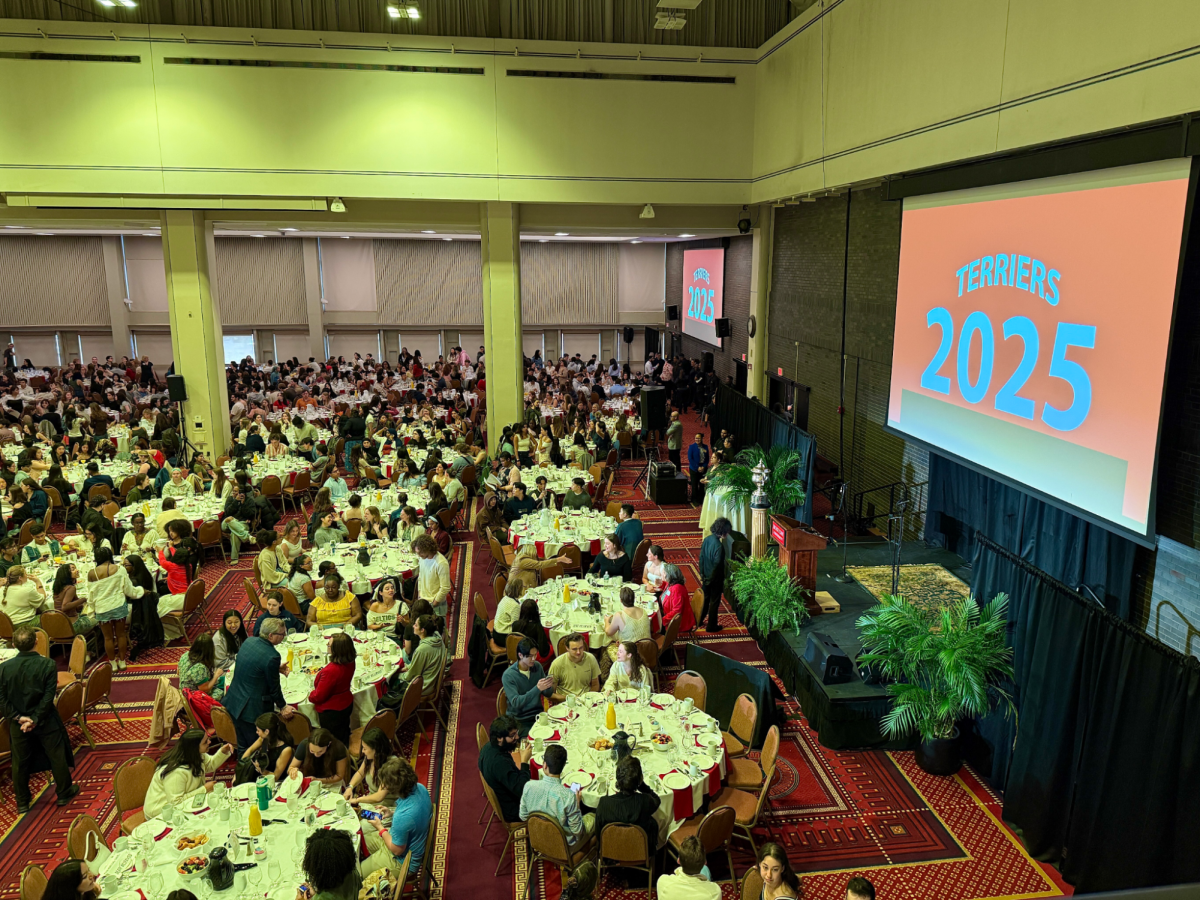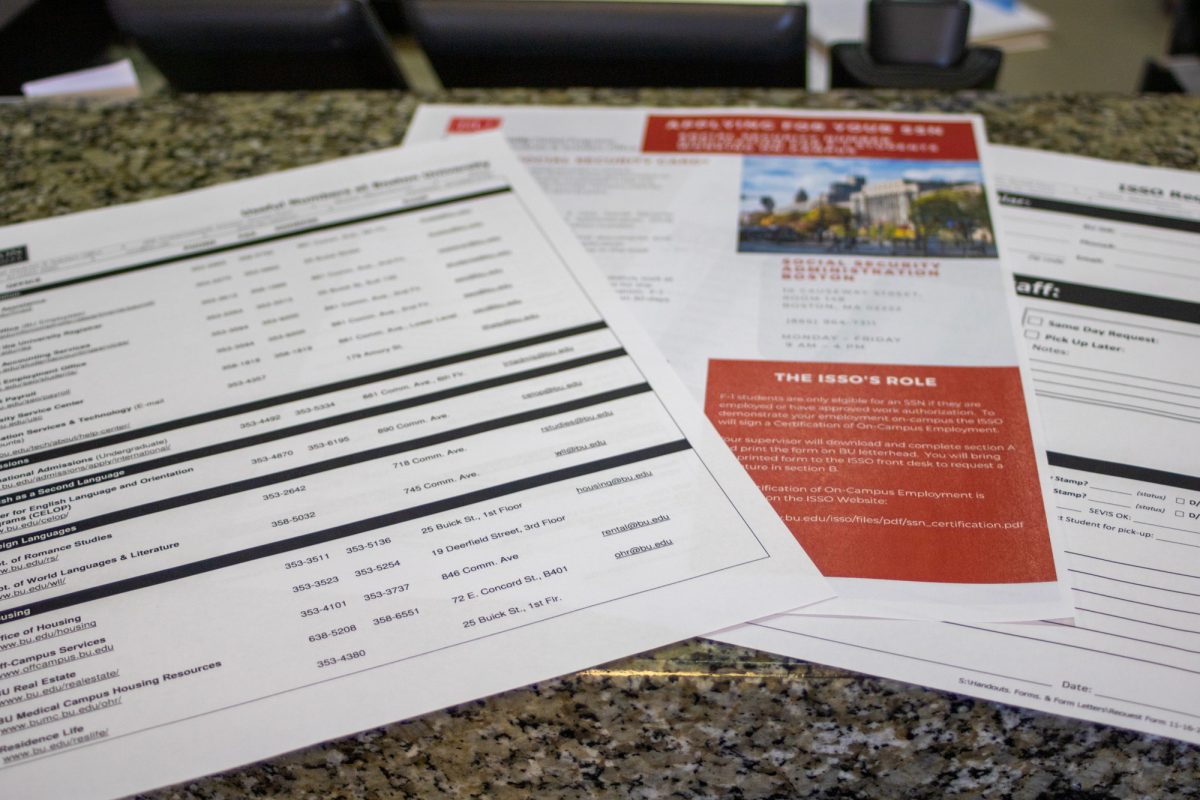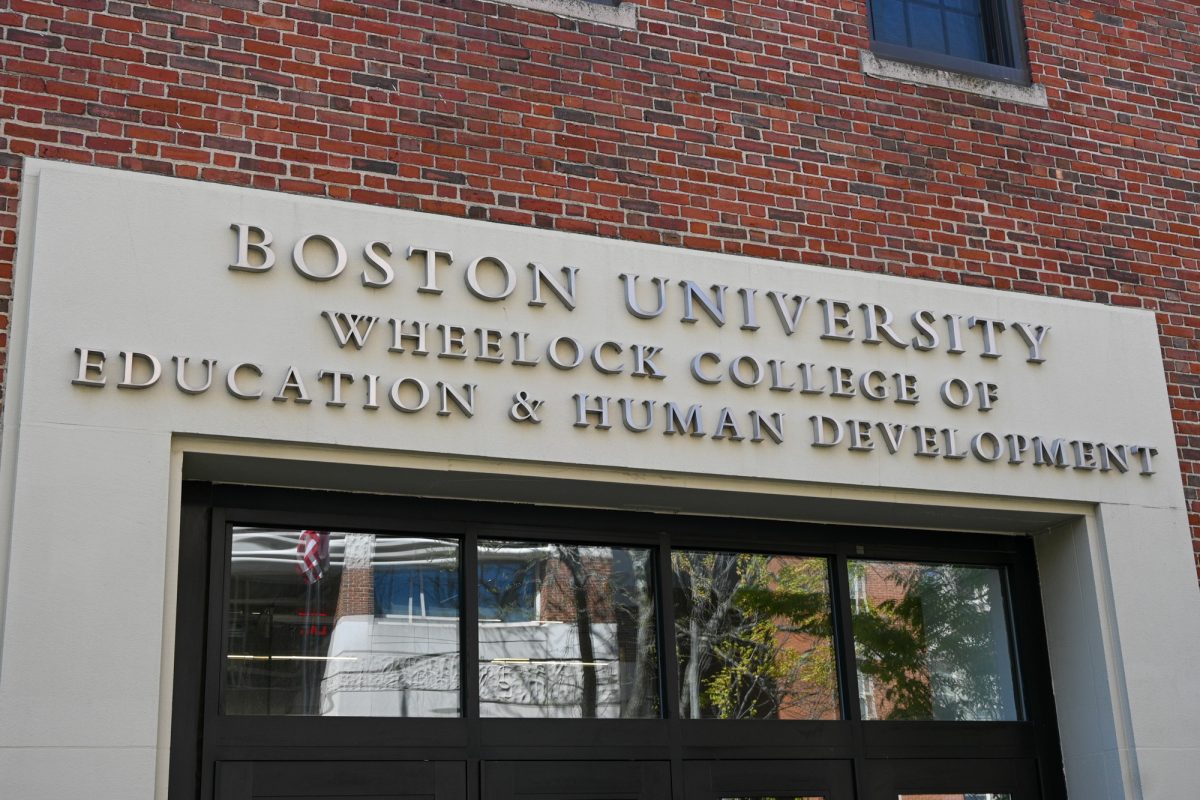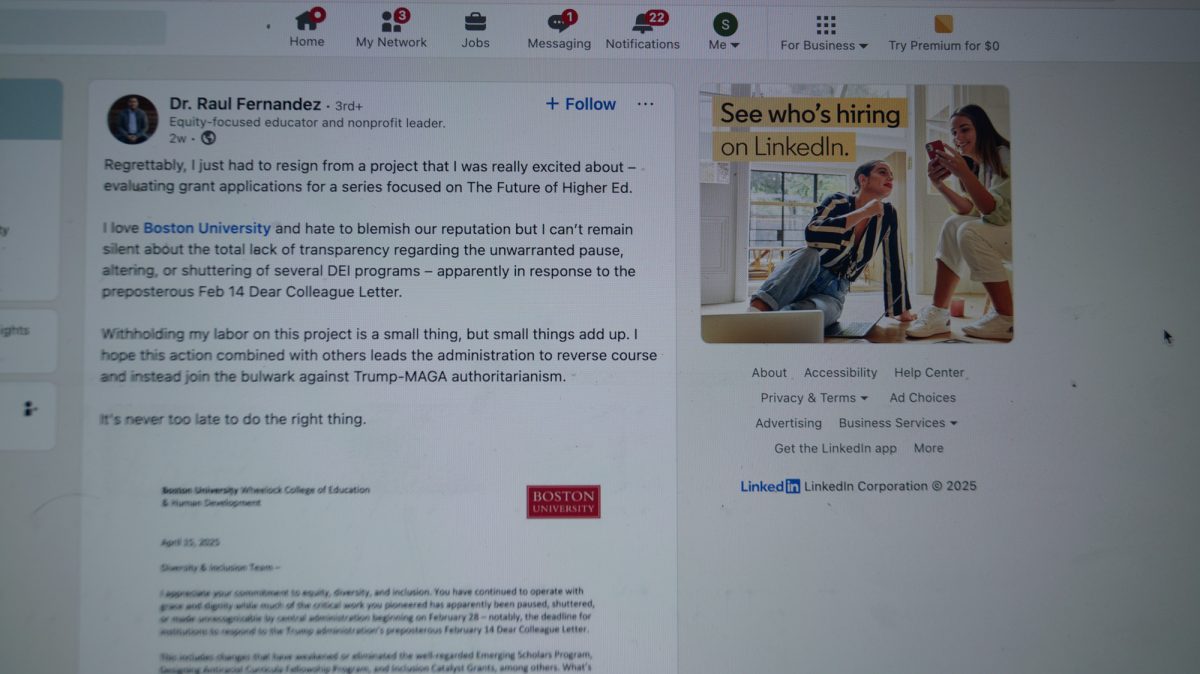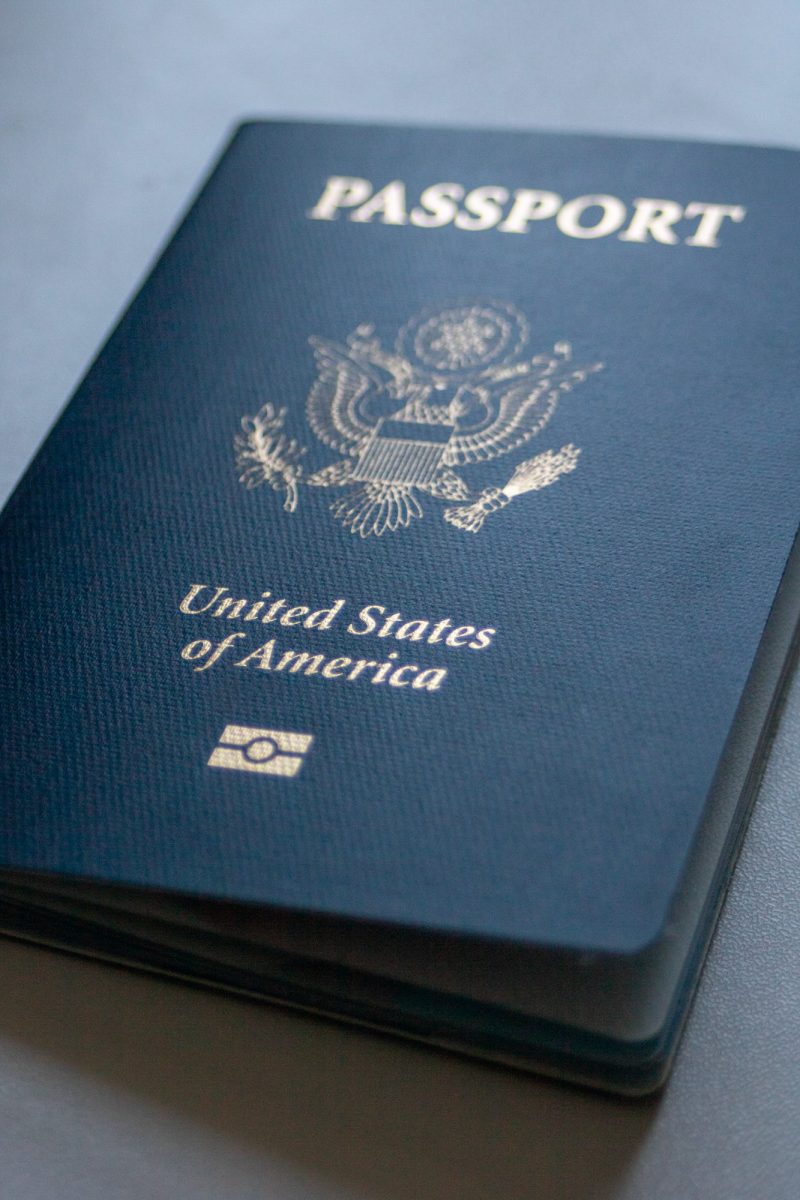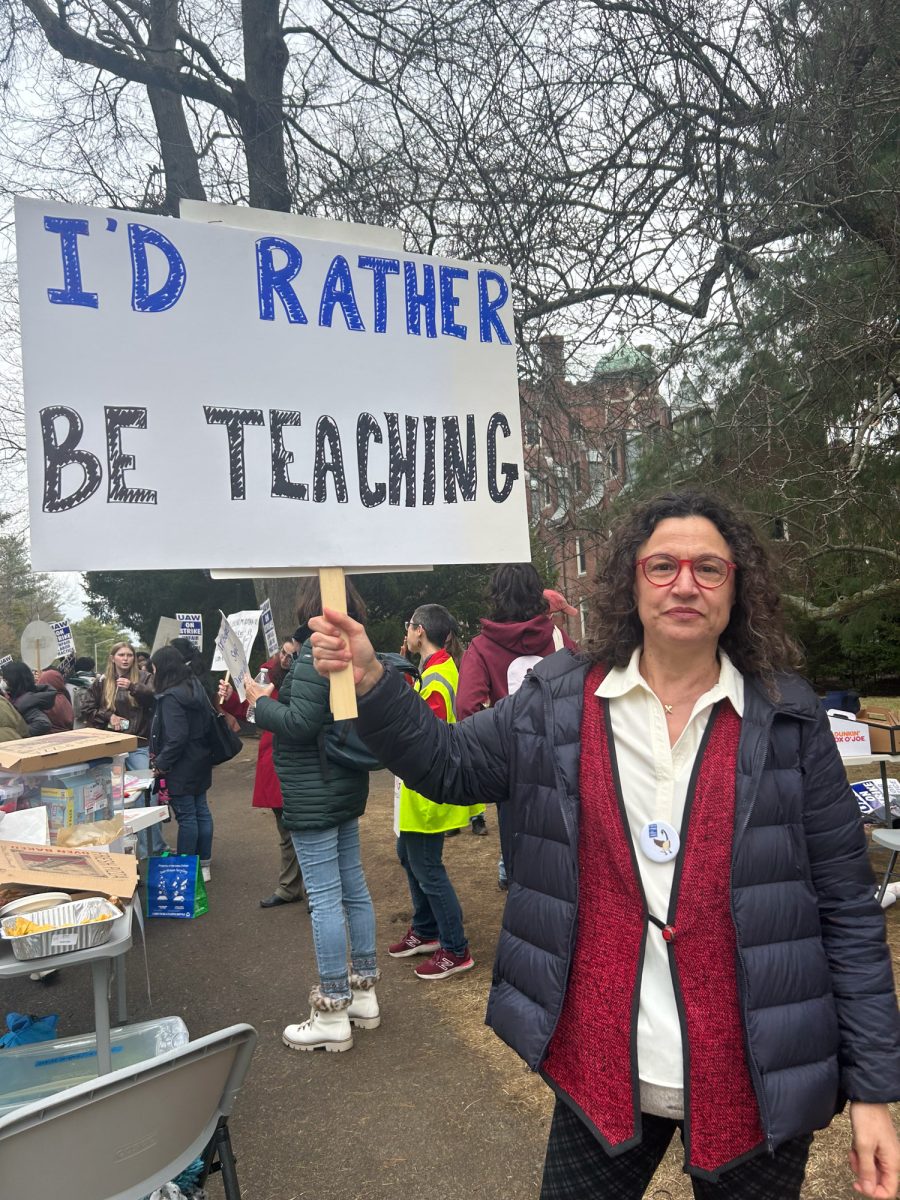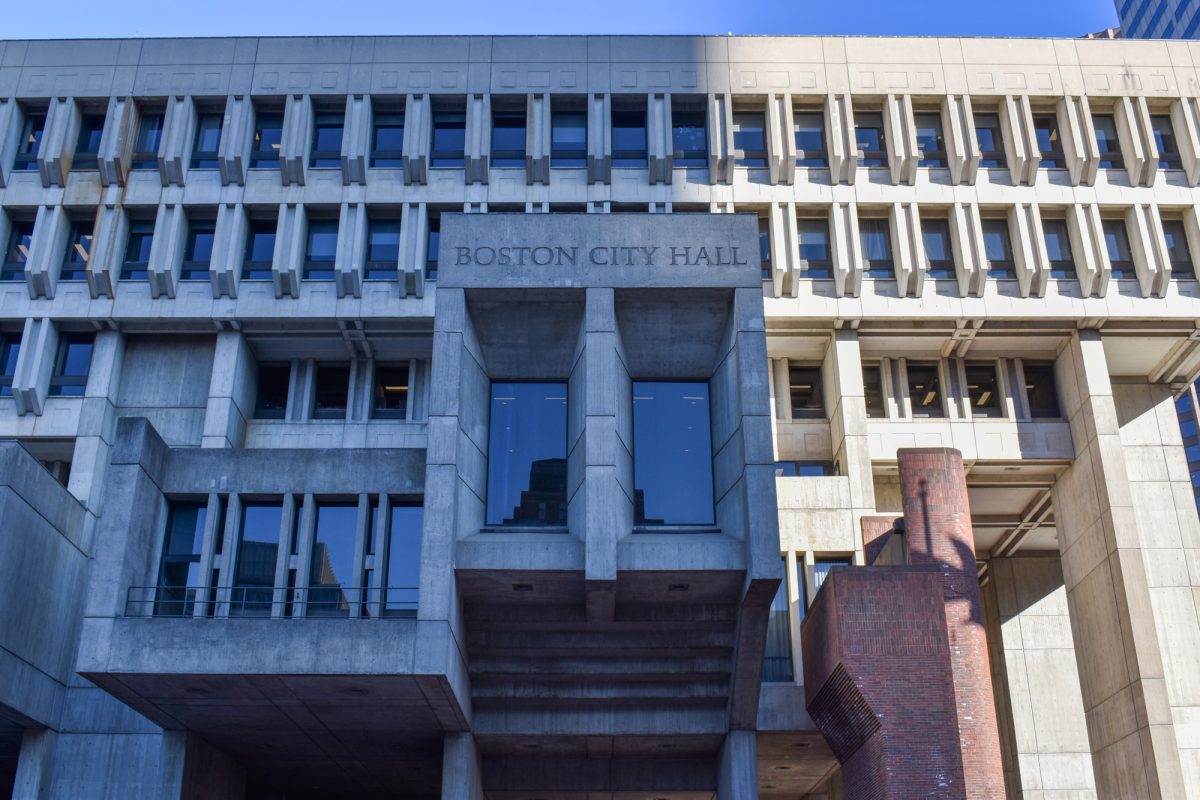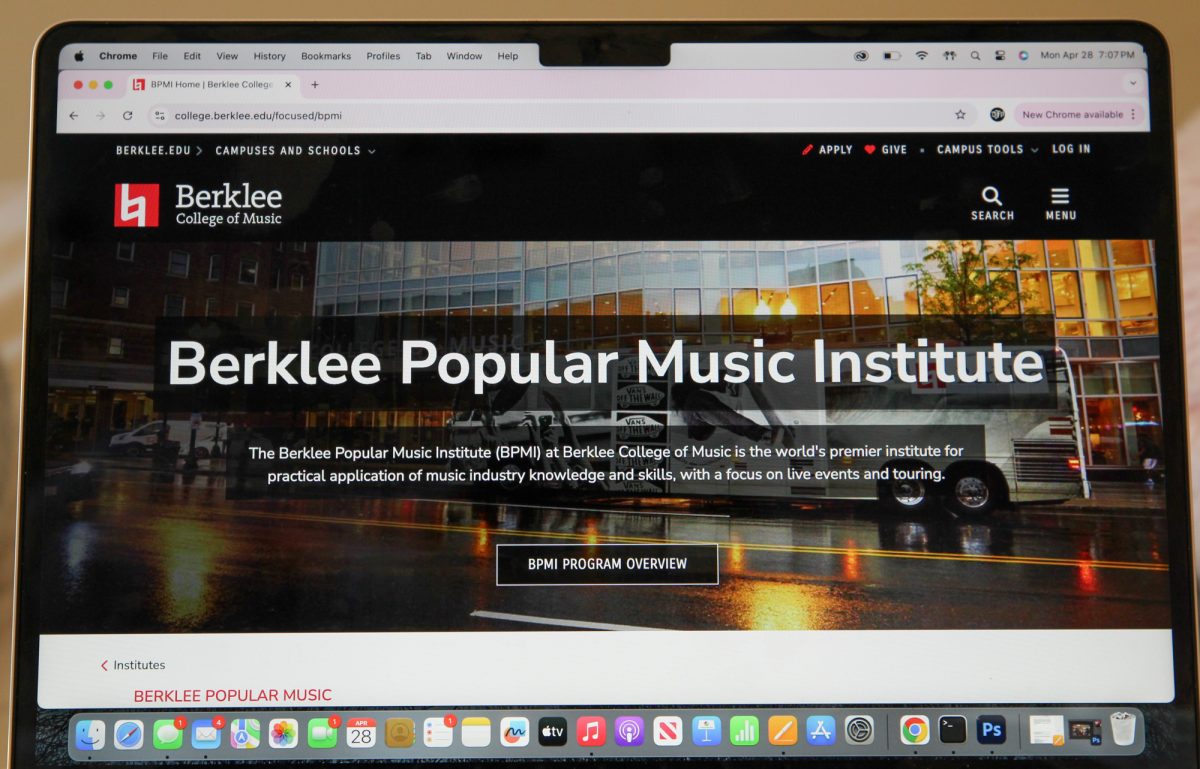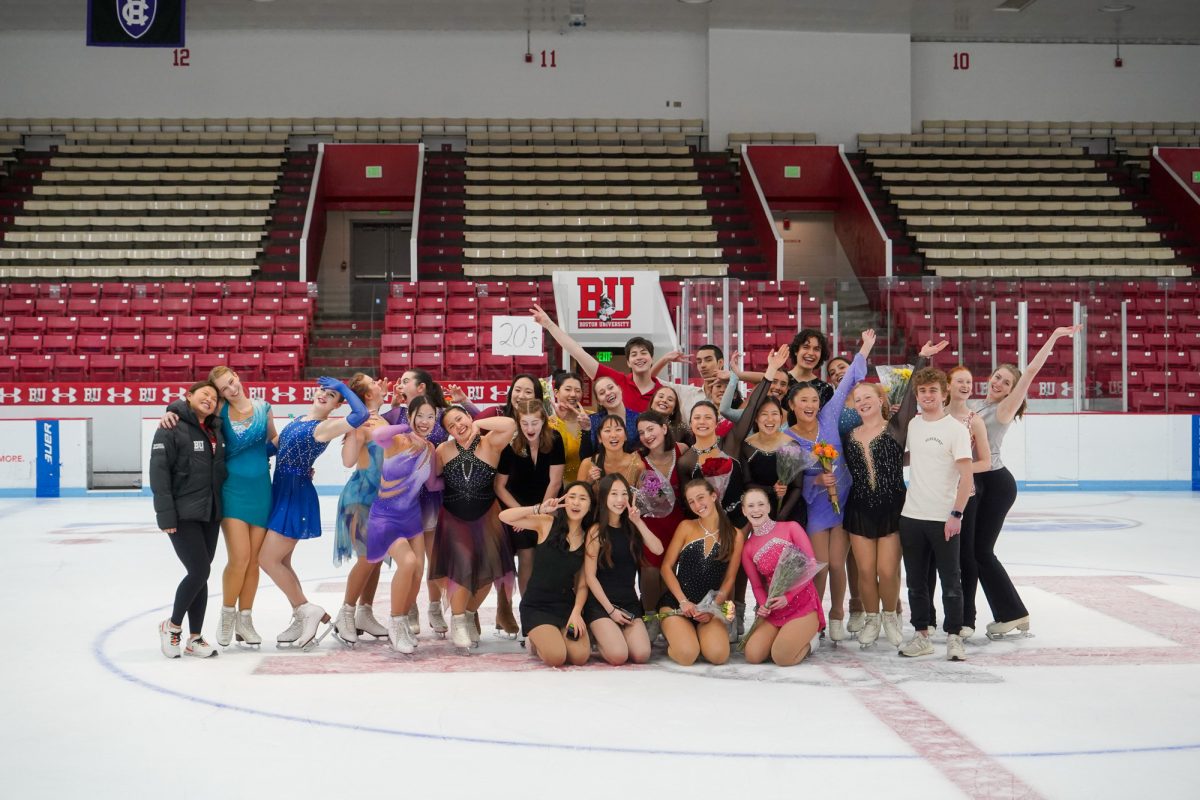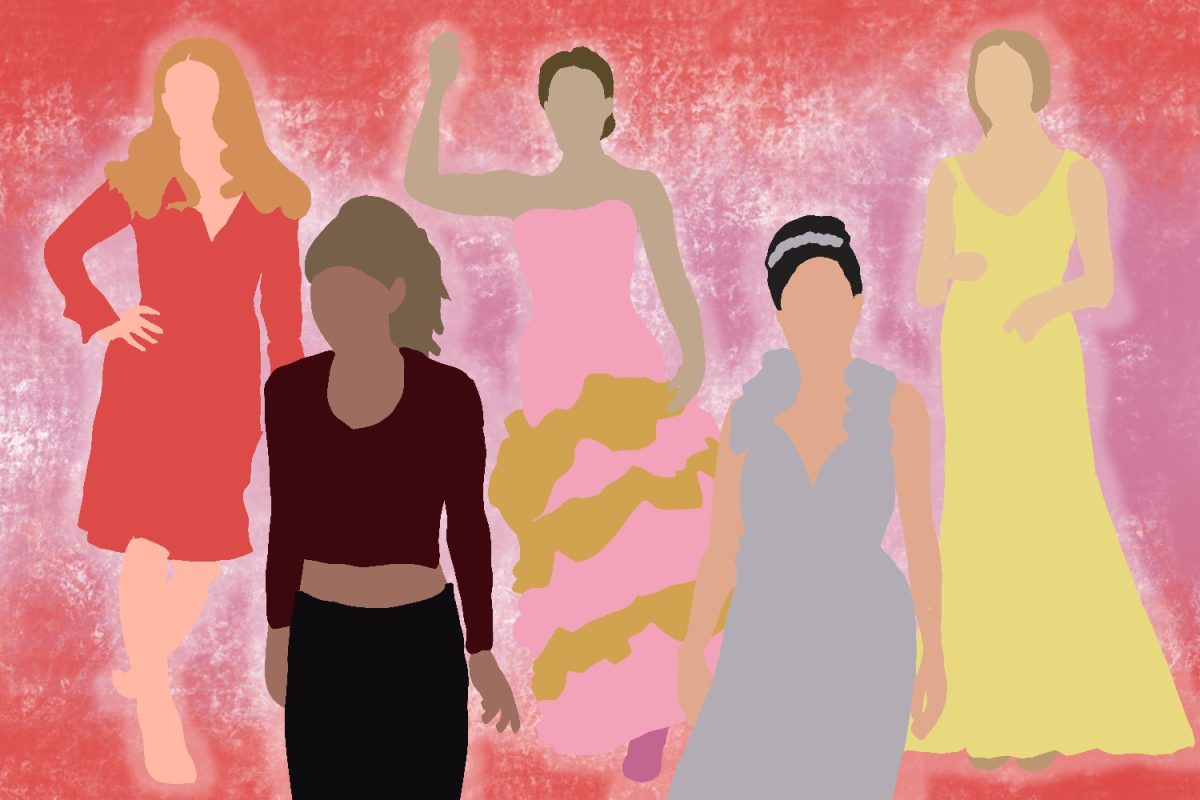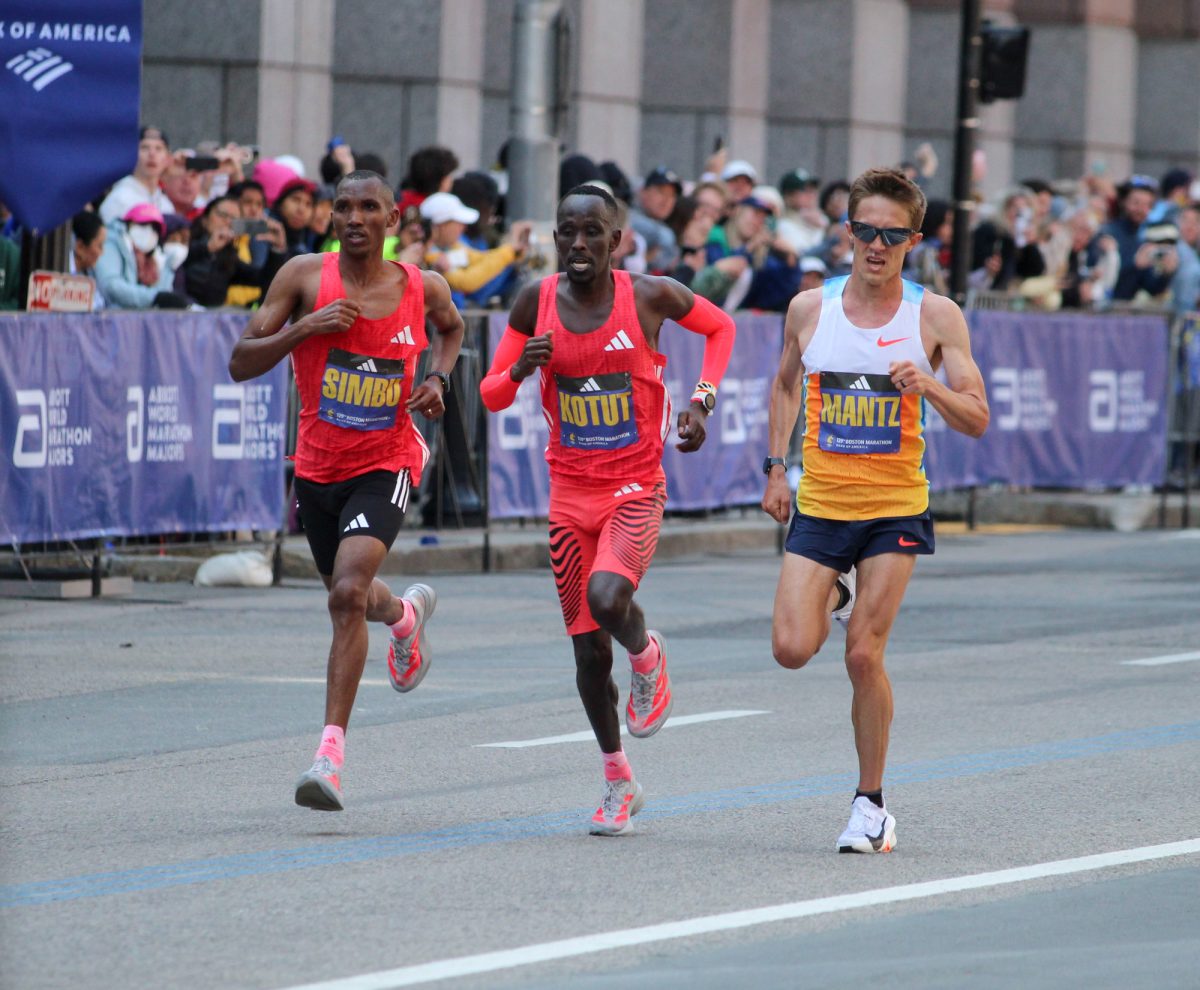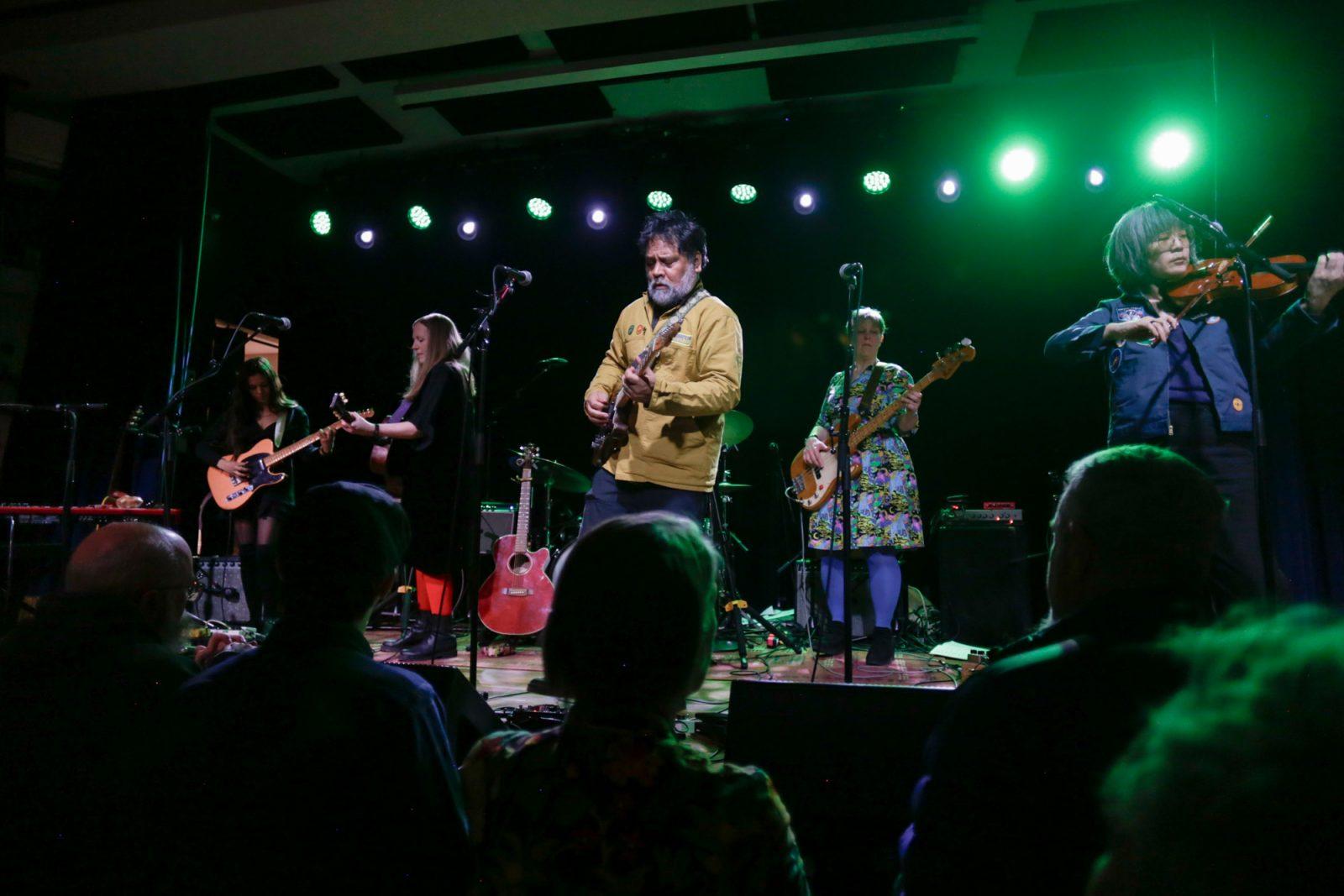Walking from Massachusetts Avenue toward the Public Gardens, the stores slowly fade from college-friendly shops like Urban Outfitters, Newbury Comics, Puma and Trident Booksellers ‘ Café to the more upscale clothiers representing a veritable ABC of the fashion world: Armani, Burberry and Chanel.
This distinct change from a bohemian-chic college scene to expensive high-end clothing emporiums is related to real estate prices, relative location to neighborhoods in Boston and the historical pattern of clientele shopping in select areas of Newbury Street, city representatives, corporate public relations envoys and store managers said.
HISTORY’S CHARM AND THE
PRESENT CONDITIONS
The Arlington end of Newbury has been anchored by the Ritz Carlton Hotel since 1927, and many interviewed for this article said its presence, along with the Park Plaza and Four Seasons Hotels close to the Public Garden contribute to the clientele shopping toward that end of the street.
The Ritz Carlton “has attracted the most discerning travelers visiting Boston for business and leisure purposes,” said Caron LeBrun, the area director of public relations for the luxury hotel.
“Since it opened it has been a social center in Boston for weddings, holiday celebrations, family gatherings, corporate and community events,” she continued. “Its presence is a major factor in bringing this clientele to Newbury Street, especially the first block.”
The tourist clientele attracted to these luxury hotels and their proximity to the Boston Common, could find the Arlington end of Newbury an attractive location.
“When you’re heading toward Kenmore, that is when you are getting closer to the colleges and closer to Arlington … you already have the Ritz Carlton there, [and] a lot of the businesses around Downtown Crossing,” said Kate Quinn, who works in the office of the Newbury Street League, a business consortium for the street.
“At one end, you’re much closer to the Downtown Crossing area where all of these big businesses are, and many of the people who are going to be shopping at Chanel and Burberry,” she continued. “And you have the Ritz Carlton, where Manny Ramirez lives, and where another of famous people and businesses do their trade.”
Quinn said after Chanel moved onto Newbury Street, which is located adjacent to the Ritz Carlton, and it found a successful market with the clientele of the hotel who were willing to shop at high-end stores, others followed suit.
“You’re going to get Burberry coming in right across the street,” she said, “and then after a while like tends to call the like. That’s just where they tended to congregate.”
The same sense of history and creation of a constellation of stores is mirrored at the other end of Newbury, with Newbury Comics being a primary catalyst for development.
Duncan Browne, the chief operating officer for Newbury Comics, said Newbury Comics began out of the apartment of two Massachusetts Institute of Technology students in 1978 when the end bordering Mass. Ave. was a “student ghetto.”
“Newbury Comics has been an organic element in the evolution of Newbury Street. From a funky, cheap apartment area to a vibrant, hip to high-end shopping destination,” he said.
Browne said he also was not sure if Newbury Comics was the first retailer at its end of the street, or simply one of the oldest that remains standing. Further down the street, many of the buildings now occupied by businesses and restaurants, were formerly rented apartments where students lived.
“Like does follow like,” Browne said. “Because Newbury Comics was sitting there, and was successful and was attracting punk rockers with weird haircuts and lots of buttons and probably not all that much money to spend — certainly not that much money to spend on a Brooks Brothers blue blazer or something — I think other stores came up around Newbury Comics that were oriented toward a customer who was a hip, urban young person who didn’t have tons of money.”
REAL ESTATE PRICES
Another factor in a store’s placement besides its connection to the historical roots surrounding is real-estate values.
Browne said retailers coming to Newbury Street would try to position themselves relative to other stores.
“I think in general retailers do like to position themselves relative to other retailers and the clientele that other retailers already attract,” he said, “so they don’t have to market themselves to be the attractive new place that people don’t already go.”
However, this might not always be possible, and simply getting on Newbury Street and benefiting from the immense amount of foot traffic on the street will be good for business.
Yet getting onto Newbury Street in general — let alone the “right part” — can be an expensive proposition.
According to the City of Boston’s website for assessing values, there is a skew to the land and building values of certain businesses.
Although there are several mitigating factors to these prices including total square-footage of the store, there is a trend to the prices.
2 Newbury St., which houses Burberry, had a Fiscal Year 2006 total assessed value of $4.326 million. Its next-door neighbor, 4 Newbury, which houses the high-end jewelry store Erwin Pearl, had a total assessed value of $4.925 million.
At the other end of the street, Newbury Comics at 332 Newbury had a value of $1.223 million, while its cross-street neighbor Puma, at 33 Newbury, had a value of $1.442 million.
Browne said the real estate prices tended to reinforce the dynamic of certain businesses clumping together.
“For lower-end retailers [real estate values] are very important,” he said. “For a Zegna or a Chanel, I think it’s less important than the perception that this is where the well-heeled clientele shop.”
Browne said businesses like his that sell low-cost, low-margin items think about real estate prices more than high-cost, high-margin businesses at the Arlington End of the street.
NEIGHBORHOOD AFFILIATION
Yet another factor may be the relationship of these stores to surrounding neighborhoods.
“The people who are living at Beacon Hill and also the people who are going to work at the Downtown Crossing area,” Quinn said, “which is not that far away, are definitely going to be the people who are probably more able to shop at Chanel and Burberry than the people who are going to college.”
Yet Browne does not think the neighborhoods make much of difference in determining what stores come in.
“I don’t think people [at the Arlington end of the street] said, ‘We’re near Beacon Hill, so let’s be here.'”
Browne said Newbury Comics was not opened where it is now on the street because of its proximity to Boston University or any other area college.
He also said proximity to different neighborhoods does not affect a store’s clientele.
“I feel that if people are in Boston, whether they live on Beacon Hill or Kenmore Square or Huntington Avenue,” he said, “I think they think, ‘I want to go shopping for blank,’ you fill in the blank whether it’s a sport coat or a Strokes CD or a funky beaded curtain from Urban Outfitters for your dorm room, I think they go, ‘Let’s go to Newbury Street.”’
IS THERE A TRUE NATURE TO
NEWBURY?
Even though there is a distinct change on the street, it should not divide people, and is not as extreme as it appears to be, some say.
“All along the street, there are things that would be of interest to college students, I would think,” said Arlen Vadum, a member of the newbury-st.com team. “There’s places to shop just about everywhere.”
Quinn said inclusiveness is the perception Newbury Street wants to give to visiting tourists or prospective shoppers.
“They consciously maintain now that it’s not only a great shopping street, but that there’s something for everybody,” she said. “So when new businesses are moving in, they do move consciously for one end of the street or the other.”
Quinn said she thought the change from low-end to more high-end stores was gradual.
“Once you’re in the middle of the street you’ll start gradually seeing more of the high-end stores,” she said. “But you’re still going to see a lot of the smaller places, too.”
Browne agreed, saying there is a distinct change from the brownstone and bohemia of the Massachusetts Avenue end toward the austere, gilded shops near Arlington Street, but in the end, the change made some sense.
“I think it is dramatic that one street has that spectrum on it,” Browne said. “But in the context of Newbury Street going from one end to the other, there seems to be a certain pacing and certain logic to it.”

